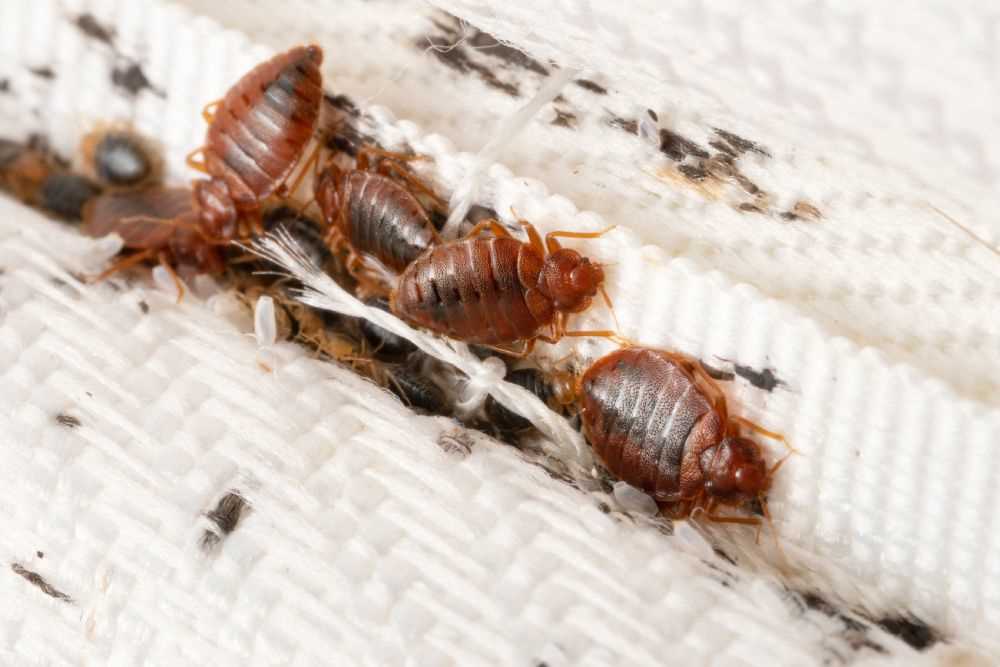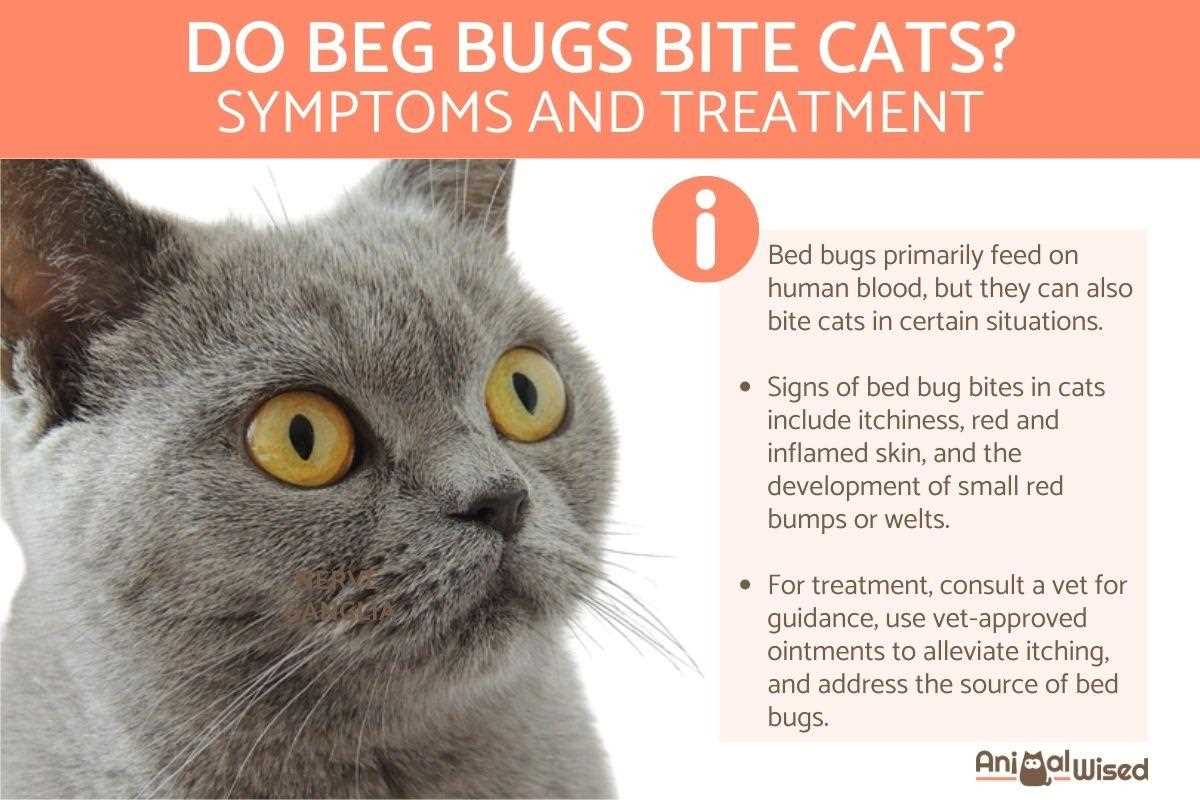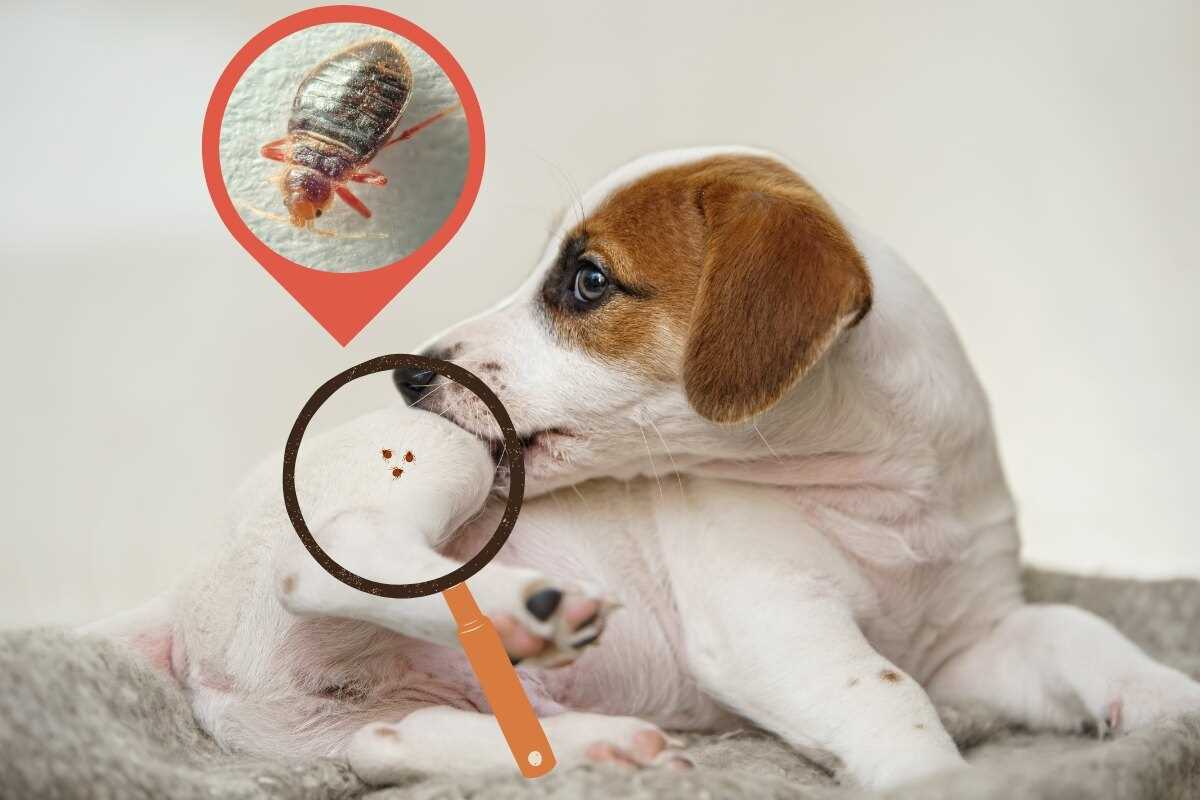



As a Scottish Fold with a keen interest in my fellow pets’ well-being, I want to share some insights about a common concern regarding our furry companions. These little critters can indeed affect your four-legged family members. While they typically prefer humans as their hosts, they won’t hesitate to take a nibble from other warm-blooded animals, including my canine pals and feline friends.
For those of us who share our homes with these adorable creatures, vigilance is key. Signs of irritation on your pet’s skin, such as excessive scratching or biting, can indicate an unwelcome infestation. Regular checks and maintaining a clean living environment can help reduce the likelihood of an encounter.
Should you notice any unusual behavior or skin issues in your companions, consult a veterinarian for the best course of action. Prevention is always better than a cure, so be proactive in protecting your beloved pets from these unwanted visitors.
Can Bed Bugs Bite Dogs and Cats
Yes, these tiny pests can feed on various mammals, including our furry companions. Their preference for blood allows them to target any warm-blooded creature, which means your pets are potential targets too.
If you suspect an infestation, it’s crucial to check your pets for unusual behavior, such as excessive scratching or biting at their skin. Inspect their fur and skin closely for small red welts or other signs of irritation.
To protect your pets, maintain a clean living environment. Regularly wash their bedding and vacuum your home thoroughly, especially around areas where your pets sleep and play. If you find signs of these pests, consult a pest control expert to eliminate the problem effectively.
Keep an eye on your pet’s health, as bites can lead to secondary infections if not addressed promptly. If irritation persists, a visit to the veterinarian may be necessary for treatment options.
Identifying Bites on Pets
Look for specific signs on your furry friends. The most common indicators include small, red, itchy welts, typically appearing in clusters or a straight line. These can be mistaken for other skin irritations, so careful observation is key.
Symptoms to Watch For

- Red, raised bumps on the skin
- Excessive scratching or licking of affected areas
- Restlessness or unusual behavior, especially at night
- Hair loss around bite sites
What to Do If You Suspect an Issue
- Examine your pet closely for signs of irritation.
- Consult your veterinarian for proper diagnosis and treatment options.
- Consider environmental control measures, such as thorough cleaning and pest management.
For the well-being of your companion, it’s essential to address any health concerns quickly. If you’re curious about your feline’s dietary needs during stress, check out how long can a cat survive without eating.
Symptoms of Infestation in Pets
If you notice excessive scratching or grooming, it may indicate an issue. Look for small red spots on the skin, which could suggest irritation. Watch for changes in behavior; if your furry friend becomes restless or anxious, it might be a sign of discomfort. Pay attention to any unexplained hair loss, especially around the neck or ears, as it can signal an underlying problem.
Unusual blood spots on bedding or surfaces where your pet rests can also be a clue. If your buddy seems to have trouble sleeping or appears lethargic, it might be worth investigating further. Keep an eye out for any signs of inflammation or swelling around bites, as this could lead to more serious health concerns.
Regular inspections of your pet’s fur can help catch any potential issues early. If you suspect your companion is affected, consulting with a veterinarian for advice is essential. They can provide guidance on how to address the problem and ensure your pet’s well-being.
Preventing and Treating Bites on Pets
To keep our furry friends safe, regular inspections of their sleeping areas are essential. Look for any signs of infestation, such as tiny dark spots or shed skins. Vacuuming frequently helps eliminate hiding spots and reduces the chances of an invasion.
Prevention Tips

Using protective covers on pet beds can serve as a barrier against unwanted intruders. It’s also wise to keep your home clean and clutter-free, as these creatures thrive in messy environments. Ensure that any secondhand items brought into your home are thoroughly cleaned.
Treatment Options

If your companion shows signs of discomfort from bites, applying a soothing ointment can provide relief. Consult a veterinarian for recommended treatments that are safe and effective. If an infestation is confirmed, professional extermination may be necessary to ensure complete removal.
Always monitor your pet’s health and behavior. If you notice unusual symptoms or persistent irritation, it’s crucial to seek veterinary advice. Additionally, interestingly, some might wonder about safety in feeding, like can cats eat black pepper, but that’s a different topic altogether!
As a Scottish Fold with a keen interest in my fellow pets’ well-being, I want to share some insights about a common concern regarding our furry companions. These little critters can indeed affect your four-legged family members. While they typically prefer humans as their hosts, they won’t hesitate to take a nibble from other warm-blooded animals, including my canine pals and feline friends.
For those of us who share our homes with these adorable creatures, vigilance is key. Signs of irritation on your pet’s skin, such as excessive scratching or biting, can indicate an unwelcome infestation. Regular checks and maintaining a clean living environment can help reduce the likelihood of an encounter.
Should you notice any unusual behavior or skin issues in your companions, consult a veterinarian for the best course of action. Prevention is always better than a cure, so be proactive in protecting your beloved pets from these unwanted visitors.
Can Bed Bugs Bite Dogs and Cats
Yes, these tiny pests can feed on various mammals, including our furry companions. Their preference for blood allows them to target any warm-blooded creature, which means your pets are potential targets too.
If you suspect an infestation, it’s crucial to check your pets for unusual behavior, such as excessive scratching or biting at their skin. Inspect their fur and skin closely for small red welts or other signs of irritation.
To protect your pets, maintain a clean living environment. Regularly wash their bedding and vacuum your home thoroughly, especially around areas where your pets sleep and play. If you find signs of these pests, consult a pest control expert to eliminate the problem effectively.
Keep an eye on your pet’s health, as bites can lead to secondary infections if not addressed promptly. If irritation persists, a visit to the veterinarian may be necessary for treatment options.
Identifying Bites on Pets
Look for specific signs on your furry friends. The most common indicators include small, red, itchy welts, typically appearing in clusters or a straight line. These can be mistaken for other skin irritations, so careful observation is key.
Symptoms to Watch For

- Red, raised bumps on the skin
- Excessive scratching or licking of affected areas
- Restlessness or unusual behavior, especially at night
- Hair loss around bite sites
What to Do If You Suspect an Issue
- Examine your pet closely for signs of irritation.
- Consult your veterinarian for proper diagnosis and treatment options.
- Consider environmental control measures, such as thorough cleaning and pest management.
For the well-being of your companion, it’s essential to address any health concerns quickly. If you’re curious about your feline’s dietary needs during stress, check out how long can a cat survive without eating.
Symptoms of Infestation in Pets
If you notice excessive scratching or grooming, it may indicate an issue. Look for small red spots on the skin, which could suggest irritation. Watch for changes in behavior; if your furry friend becomes restless or anxious, it might be a sign of discomfort. Pay attention to any unexplained hair loss, especially around the neck or ears, as it can signal an underlying problem.
Unusual blood spots on bedding or surfaces where your pet rests can also be a clue. If your buddy seems to have trouble sleeping or appears lethargic, it might be worth investigating further. Keep an eye out for any signs of inflammation or swelling around bites, as this could lead to more serious health concerns.
Regular inspections of your pet’s fur can help catch any potential issues early. If you suspect your companion is affected, consulting with a veterinarian for advice is essential. They can provide guidance on how to address the problem and ensure your pet’s well-being.
Preventing and Treating Bites on Pets
To keep our furry friends safe, regular inspections of their sleeping areas are essential. Look for any signs of infestation, such as tiny dark spots or shed skins. Vacuuming frequently helps eliminate hiding spots and reduces the chances of an invasion.
Prevention Tips

Using protective covers on pet beds can serve as a barrier against unwanted intruders. It’s also wise to keep your home clean and clutter-free, as these creatures thrive in messy environments. Ensure that any secondhand items brought into your home are thoroughly cleaned.
Treatment Options

If your companion shows signs of discomfort from bites, applying a soothing ointment can provide relief. Consult a veterinarian for recommended treatments that are safe and effective. If an infestation is confirmed, professional extermination may be necessary to ensure complete removal.
Always monitor your pet’s health and behavior. If you notice unusual symptoms or persistent irritation, it’s crucial to seek veterinary advice. Additionally, interestingly, some might wonder about safety in feeding, like can cats eat black pepper, but that’s a different topic altogether!
As a Scottish Fold with a keen interest in my fellow pets’ well-being, I want to share some insights about a common concern regarding our furry companions. These little critters can indeed affect your four-legged family members. While they typically prefer humans as their hosts, they won’t hesitate to take a nibble from other warm-blooded animals, including my canine pals and feline friends.
For those of us who share our homes with these adorable creatures, vigilance is key. Signs of irritation on your pet’s skin, such as excessive scratching or biting, can indicate an unwelcome infestation. Regular checks and maintaining a clean living environment can help reduce the likelihood of an encounter.
Should you notice any unusual behavior or skin issues in your companions, consult a veterinarian for the best course of action. Prevention is always better than a cure, so be proactive in protecting your beloved pets from these unwanted visitors.
Can Bed Bugs Bite Dogs and Cats
Yes, these tiny pests can feed on various mammals, including our furry companions. Their preference for blood allows them to target any warm-blooded creature, which means your pets are potential targets too.
If you suspect an infestation, it’s crucial to check your pets for unusual behavior, such as excessive scratching or biting at their skin. Inspect their fur and skin closely for small red welts or other signs of irritation.
To protect your pets, maintain a clean living environment. Regularly wash their bedding and vacuum your home thoroughly, especially around areas where your pets sleep and play. If you find signs of these pests, consult a pest control expert to eliminate the problem effectively.
Keep an eye on your pet’s health, as bites can lead to secondary infections if not addressed promptly. If irritation persists, a visit to the veterinarian may be necessary for treatment options.
Identifying Bites on Pets
Look for specific signs on your furry friends. The most common indicators include small, red, itchy welts, typically appearing in clusters or a straight line. These can be mistaken for other skin irritations, so careful observation is key.
Symptoms to Watch For

- Red, raised bumps on the skin
- Excessive scratching or licking of affected areas
- Restlessness or unusual behavior, especially at night
- Hair loss around bite sites
What to Do If You Suspect an Issue
- Examine your pet closely for signs of irritation.
- Consult your veterinarian for proper diagnosis and treatment options.
- Consider environmental control measures, such as thorough cleaning and pest management.
For the well-being of your companion, it’s essential to address any health concerns quickly. If you’re curious about your feline’s dietary needs during stress, check out how long can a cat survive without eating.
Symptoms of Infestation in Pets
If you notice excessive scratching or grooming, it may indicate an issue. Look for small red spots on the skin, which could suggest irritation. Watch for changes in behavior; if your furry friend becomes restless or anxious, it might be a sign of discomfort. Pay attention to any unexplained hair loss, especially around the neck or ears, as it can signal an underlying problem.
Unusual blood spots on bedding or surfaces where your pet rests can also be a clue. If your buddy seems to have trouble sleeping or appears lethargic, it might be worth investigating further. Keep an eye out for any signs of inflammation or swelling around bites, as this could lead to more serious health concerns.
Regular inspections of your pet’s fur can help catch any potential issues early. If you suspect your companion is affected, consulting with a veterinarian for advice is essential. They can provide guidance on how to address the problem and ensure your pet’s well-being.
Preventing and Treating Bites on Pets
To keep our furry friends safe, regular inspections of their sleeping areas are essential. Look for any signs of infestation, such as tiny dark spots or shed skins. Vacuuming frequently helps eliminate hiding spots and reduces the chances of an invasion.
Prevention Tips

Using protective covers on pet beds can serve as a barrier against unwanted intruders. It’s also wise to keep your home clean and clutter-free, as these creatures thrive in messy environments. Ensure that any secondhand items brought into your home are thoroughly cleaned.
Treatment Options

If your companion shows signs of discomfort from bites, applying a soothing ointment can provide relief. Consult a veterinarian for recommended treatments that are safe and effective. If an infestation is confirmed, professional extermination may be necessary to ensure complete removal.
Always monitor your pet’s health and behavior. If you notice unusual symptoms or persistent irritation, it’s crucial to seek veterinary advice. Additionally, interestingly, some might wonder about safety in feeding, like can cats eat black pepper, but that’s a different topic altogether!











